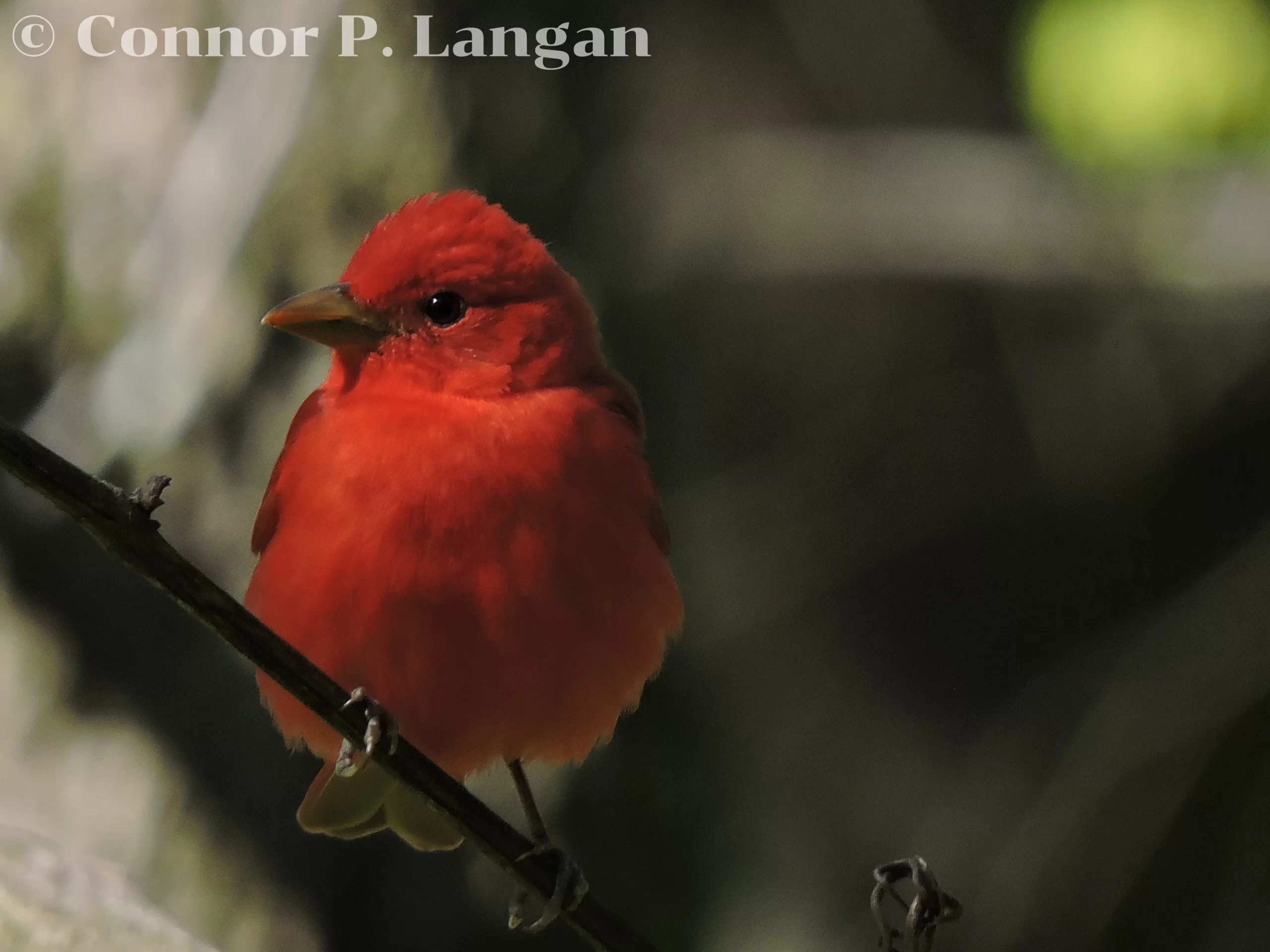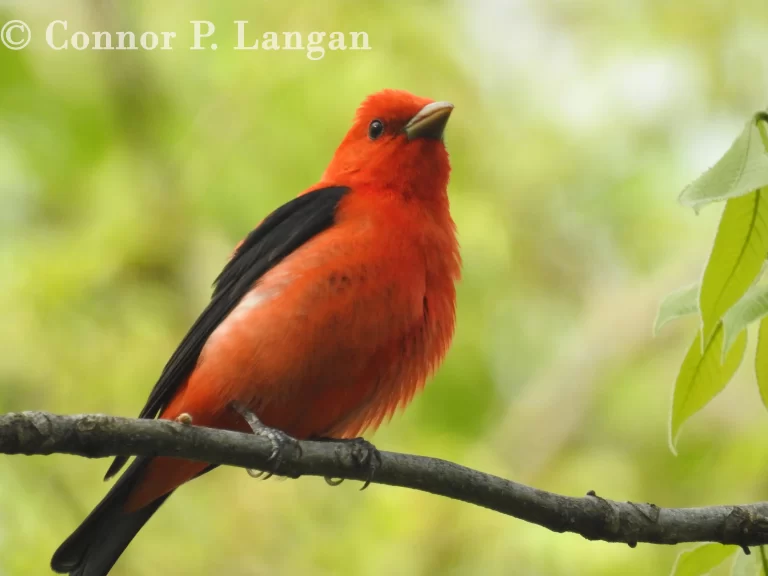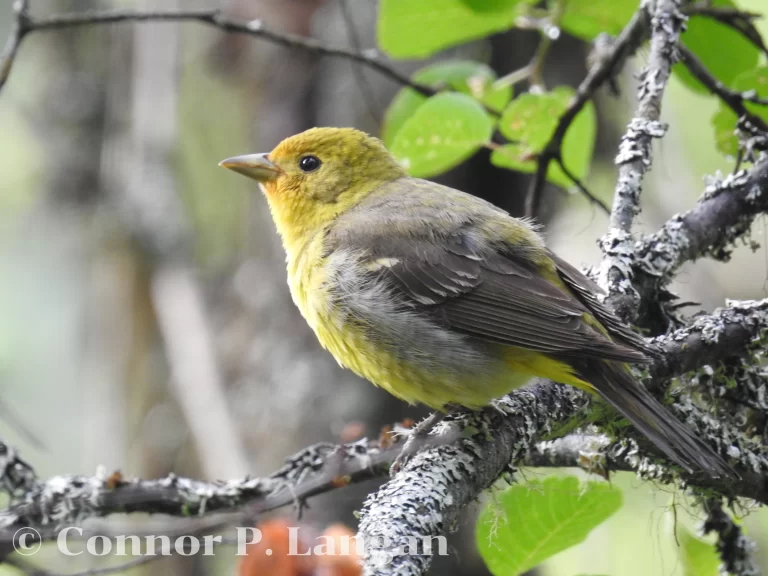Description
Summer Tanagers are rotund birds with large beaks and fairly short tails.
These tanagers measure just under 7 inches in length, while they weigh around 1 ounce.
Both males and females have a very simple color scheme. Adult male Summer Tanagers are a bright, crimson-red color overall.
Female Summer Tanagers are a yellow-green color overall.
Immature males initially look like females, but they soon begin to develop patches of red coloration.
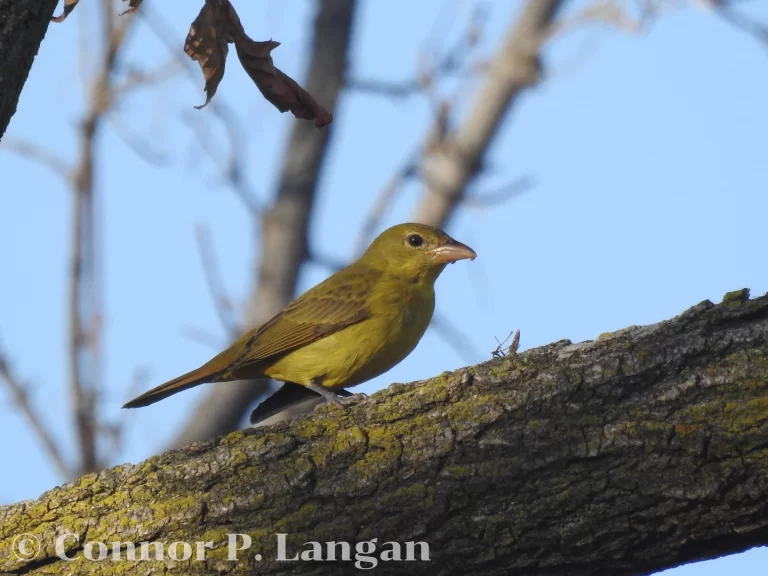
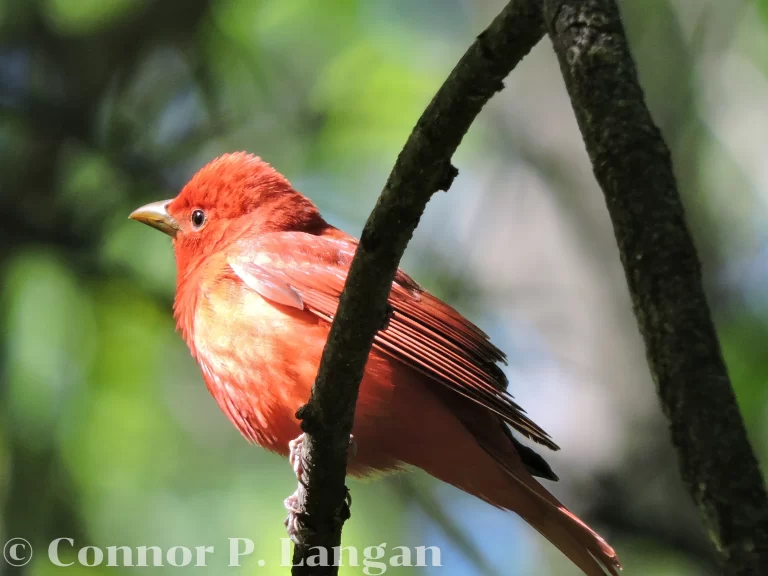
Behavior
Summer Tanagers are reserved birds that are typically found alone when they aren’t associating with their family unit.
Both male and female tanagers persistently defend their territories from intruders. These birds are especially relentless in their efforts to drive away Brown-headed Cowbirds from their territory, as these birds parasitize the nests of tanagers.
Diet
Summer Tanagers eat two primary groups of food: insects and fruits. These tanagers are especially proficient at capturing wasps and bees. When they capture these insects, they often beat them against a tree branch and remove their stingers before consumption.
Summer Tanagers are fond of a variety of fruits. These birds will eat grape jelly or halved oranges from backyards.
Habitat
These tanagers seek out open mixed forests and deciduous woodlands during the breeding season.
Look for Summer Tanagers in woodlots, forests, parks, and riparian corridors during migration. In the nonbreeding season, Summer Tanagers survive in open woodlands that are similar to those in which they breed.
Range
These birds breed in the Midwest, Southeast, and Southwest of the United States. Summer Tanagers also breed in north-central Mexico.
Summer Tanagers live in the Caribbean, Mexico, Central America, and as far south as central South America in the nonbreeding season.
Breeding
These birds are socially monogamous, with Summer Tanagers rarely seeking extra-pair copulations.
Females construct the nest without assistance from the male. Summer Tanagers place their nest in trees near an opening in the forest.
Nests are constructed from leaves, grasses, bark, and plant stems. Females craft the materials into a cup-shaped nest. The interior of the nest is often lined with soft materials to cushion the eggs.
Females produce 1 to 2 broods of eggs each year. Additionally, each clutch contains 3 to 4 eggs. It takes young 11 to 12 days to hatch from the eggs, while nestlings depart from the nest around 10 days later.
Backyard Birding
Summer Tanagers are uncommon backyard visitors. Luckily, these birds can be lured to a backyard with grape jelly and orange halves.
Population Status
Populations of Summer Tanagers have fared well in the last half-century. There are around 12 million Summer Tanagers in existence today.

